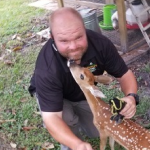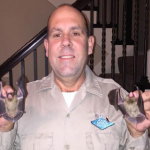North America is home to five species of blackbird, with Brewer’s blackbird, the yellow-headed blackbird, and the tricolored blackbird inhabiting the continent’s central regions and western coastlines. The red-winged blackbird and the rusty blackbird are the only species that can be found in eastern North America.
Known to many simply as the 'Blackbird', the Common Blackbird is an emblematic and familiar figure in gardens and wild spaces across the country. Their iconic song is often a symbol of the approach of spring, filling the early morning and evening air with their melodic tunes. Despite their widespread presence, it is essential to understand them, especially when they come into close contact with humans.
Appearance
General Characteristics The Common Blackbird, scientifically known as Turdus merula, is a species of true thrush. Males are distinguished by their entirely black plumage, while females and young birds are dark brown. They possess strong legs, a robust beak, and a sharp gaze.
Coloration/Patterns/Distinctive Markings Males are black and have a bright yellow eye-ring and beak. Females lack the striking yellow and instead are a muted brown all over. Juveniles can often be seen with a spotty appearance in their first few months.
Size/Features Typically, the Common Blackbird measures around 23.5 to 29 cm in length. They have a wingspan ranging from 34 to 38 cm. Males are slightly larger and more robust than females, with a weight ranging from 80 to 125 grams.
Biology
Digestion and Diet Blackbirds are omnivores, feeding on a wide range of insects, earthworms, berries, and fruits. Their diet might change seasonally, focusing more on insects during spring and summer and switching to fruits and berries in the colder months.
Reproduction Breeding season usually starts in March, lasting until July. A typical blackbird will produce 2-3 broods each year, with each clutch containing 3-5 eggs. The female incubates the eggs, which hatch in about two weeks.
Unique Sensory Systems Common Blackbirds have an acute sense of vision and hearing. Their vision helps them spot insects and worms, while their sharp hearing aids them in detecting predators and communicating with other blackbirds.
Habitat
Preferred Environments While often associated with gardens, blackbirds also inhabit woodlands, parks, and hedges. They've shown incredible adaptability, enabling them to thrive even in urbanized settings.
Urban Encounters As cities expand, Common Blackbirds have become a regular sight in urban gardens and parks. Their diet's flexibility allows them to utilize food sources available in these settings, from bugs to garden fruits.
Temperature Regulation Blackbirds, like many birds, fluff up their feathers during cold weather, trapping air and using it as insulation. In hot conditions, they seek shade and might even pant to release excess heat.
Behavior
Defensive Mechanisms When threatened, blackbirds might issue alarm calls, which are sharp and piercing. These calls alert other birds to the presence of potential dangers.
Hunting Techniques Blackbirds are ground foragers. They hop around, turning over leaves or grass, looking for insects or worms. Their sharp eyesight allows them to spot even the tiniest of prey.
Migratory Patterns While many blackbirds remain in one place throughout the year, some populations in the northern regions migrate southward during winter to find food more easily.
Damage/Problems
Diseases Blackbirds, like all wildlife, can carry diseases that might be transferred to other birds or even humans if not properly managed. Examples include avian pox and trichomoniasis.
Structural Damage Occasionally, blackbirds might nest in or around buildings, potentially causing minor structural damages or unwanted noise.
Trapping & Removal
Safe Handling It's crucial to handle blackbirds with care to prevent injury to both the bird and the handler. Specialized equipment and knowledge are needed to manage them effectively.
Relocation If blackbirds become a nuisance or are trapped inadvertently, it's essential to release them in suitable habitats where they can thrive, away from human disturbances.
Deterrence or Prevention
Property Maintenance Keeping the garden clean, limiting access to potential food sources, and not leaving pet food outside can discourage blackbirds from visiting too frequently.
Physical Barriers Installing bird nets or other deterrent systems can prevent blackbirds from nesting in undesired areas.
Exclusion Sealing off potential nesting sites, such as vents or eaves, can prevent blackbirds from setting up home in or around your property.
When nuisance wildlife becomes a concern, trust the experts at AAAC Wildlife Removal. Our team is equipped to safely and humanely address any unwanted blackbird encounters, ensuring peace of mind for you and a healthy environment for the animals. Don't let the song of the blackbird become a cause for distress - call us today!


















































